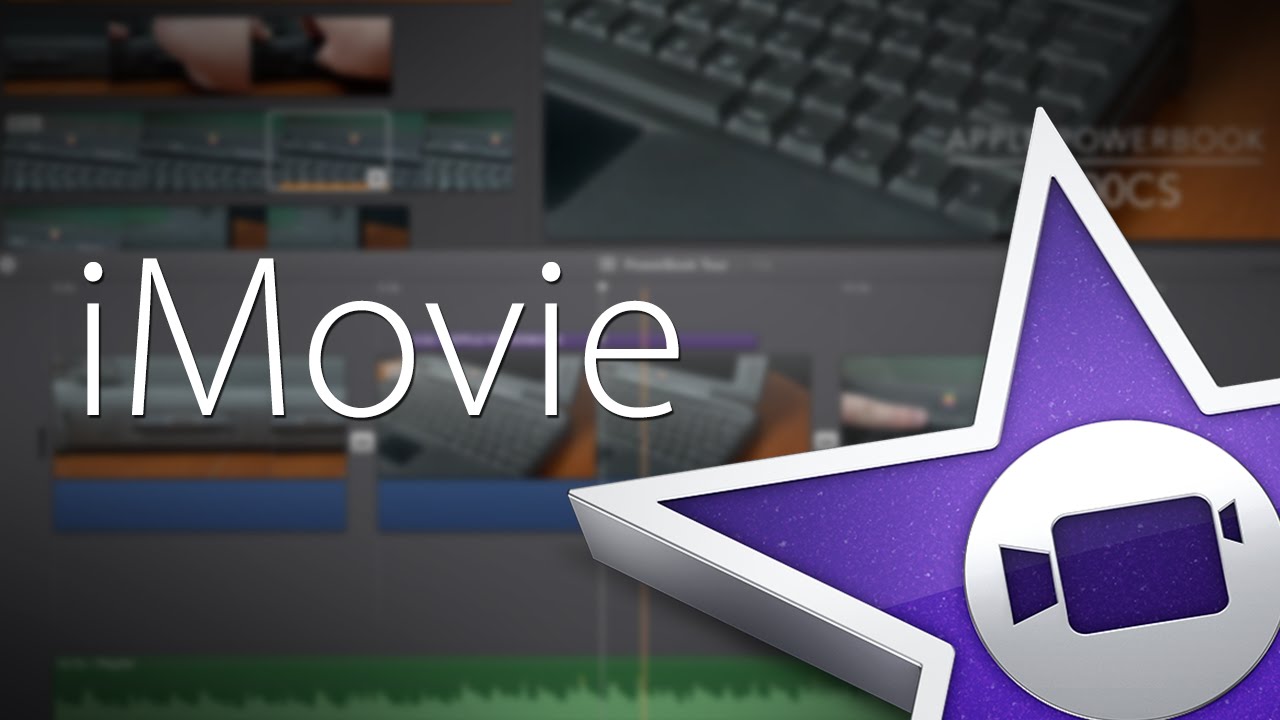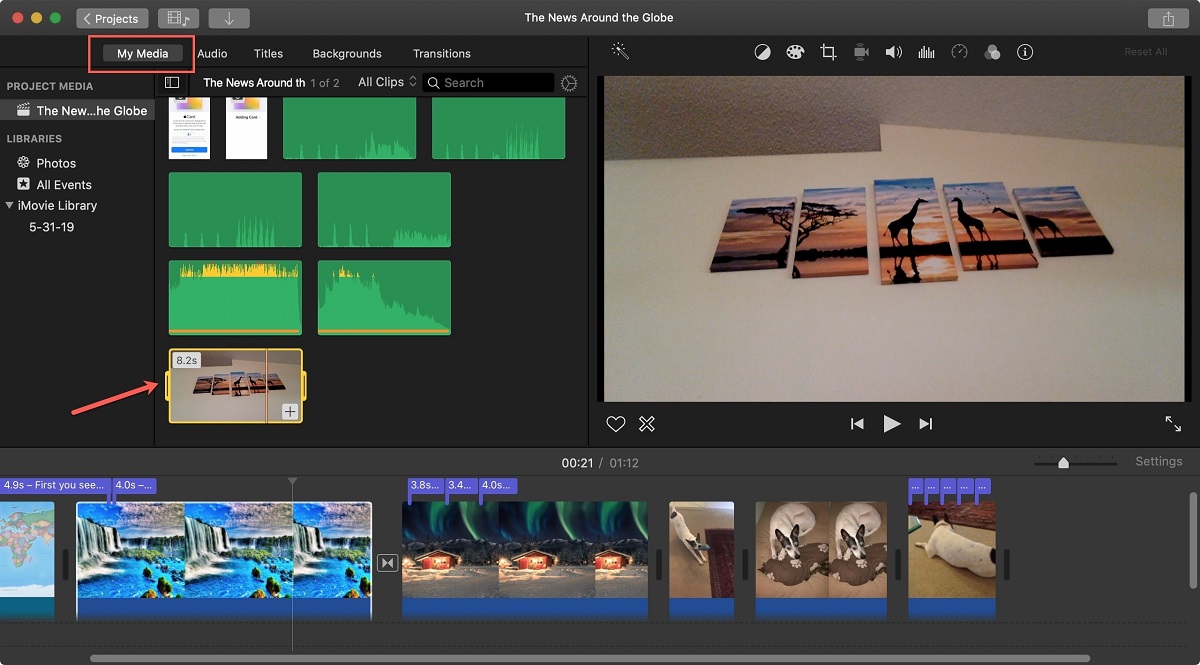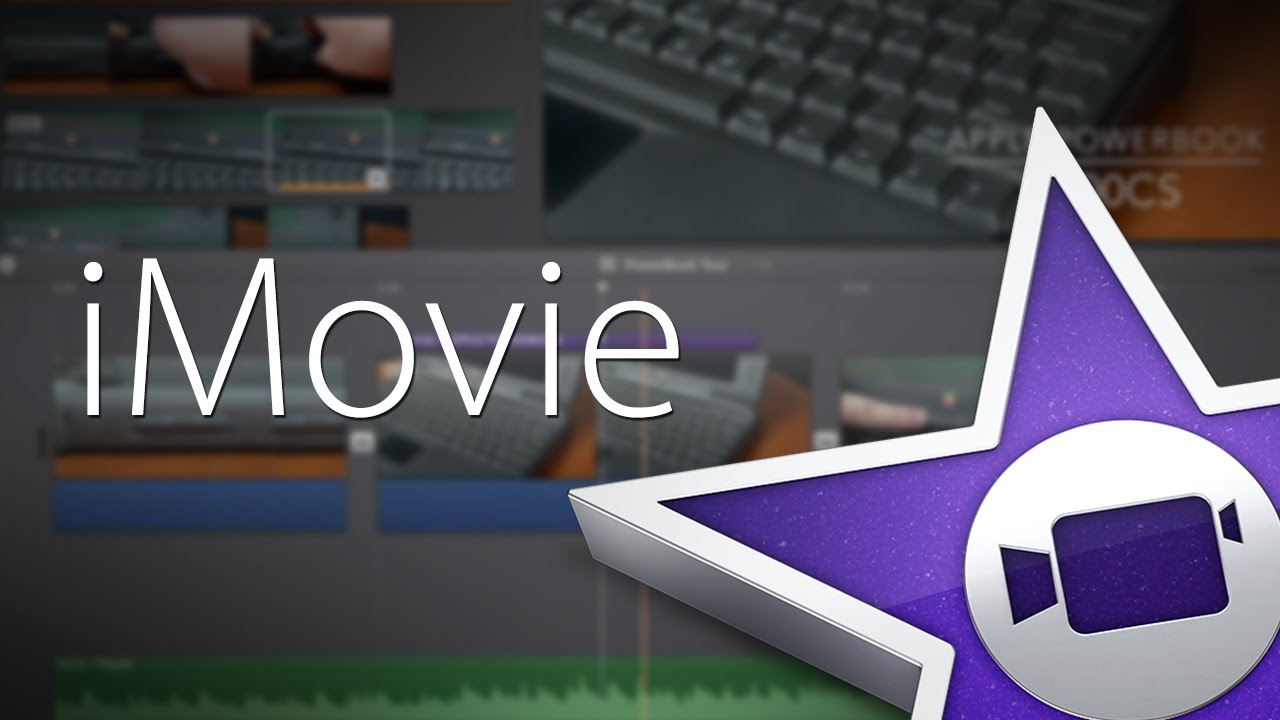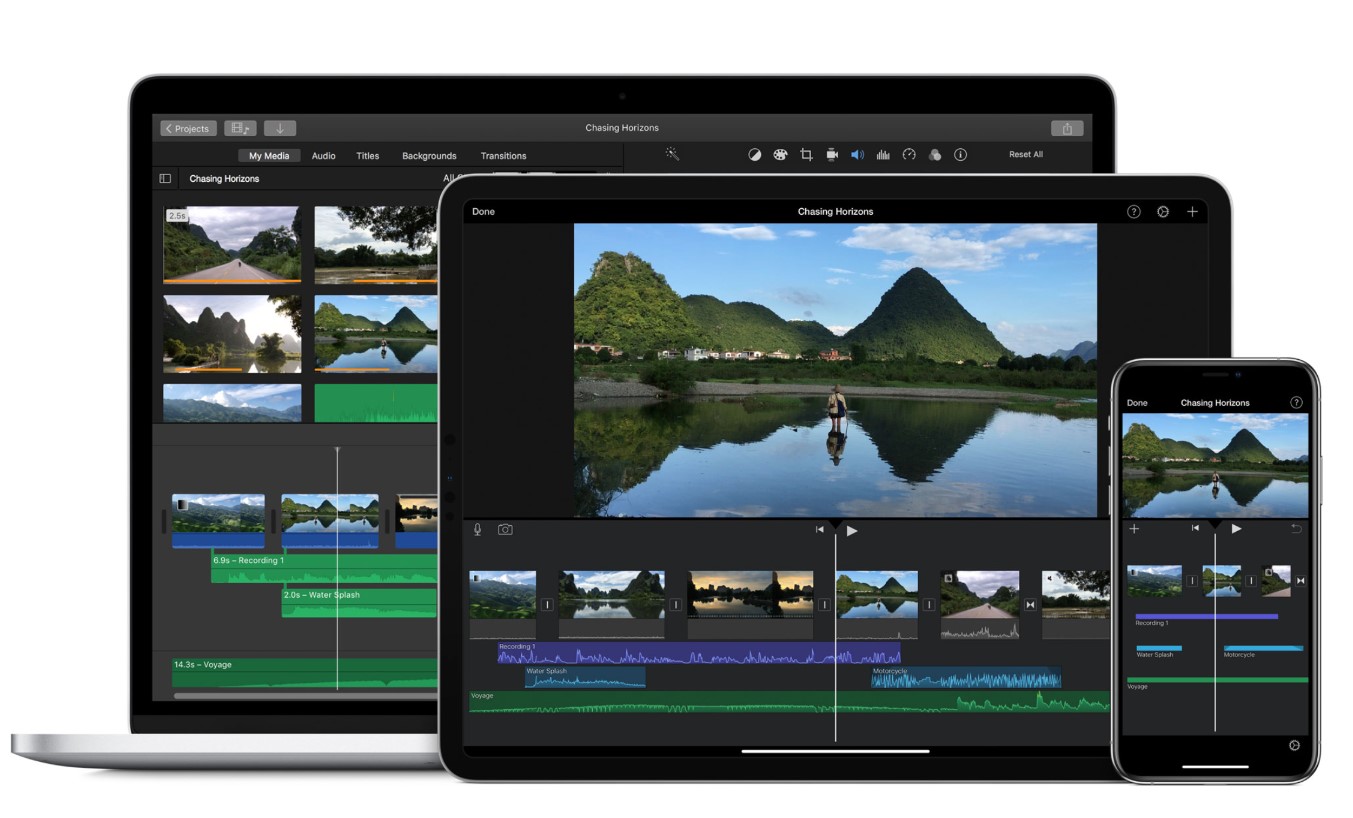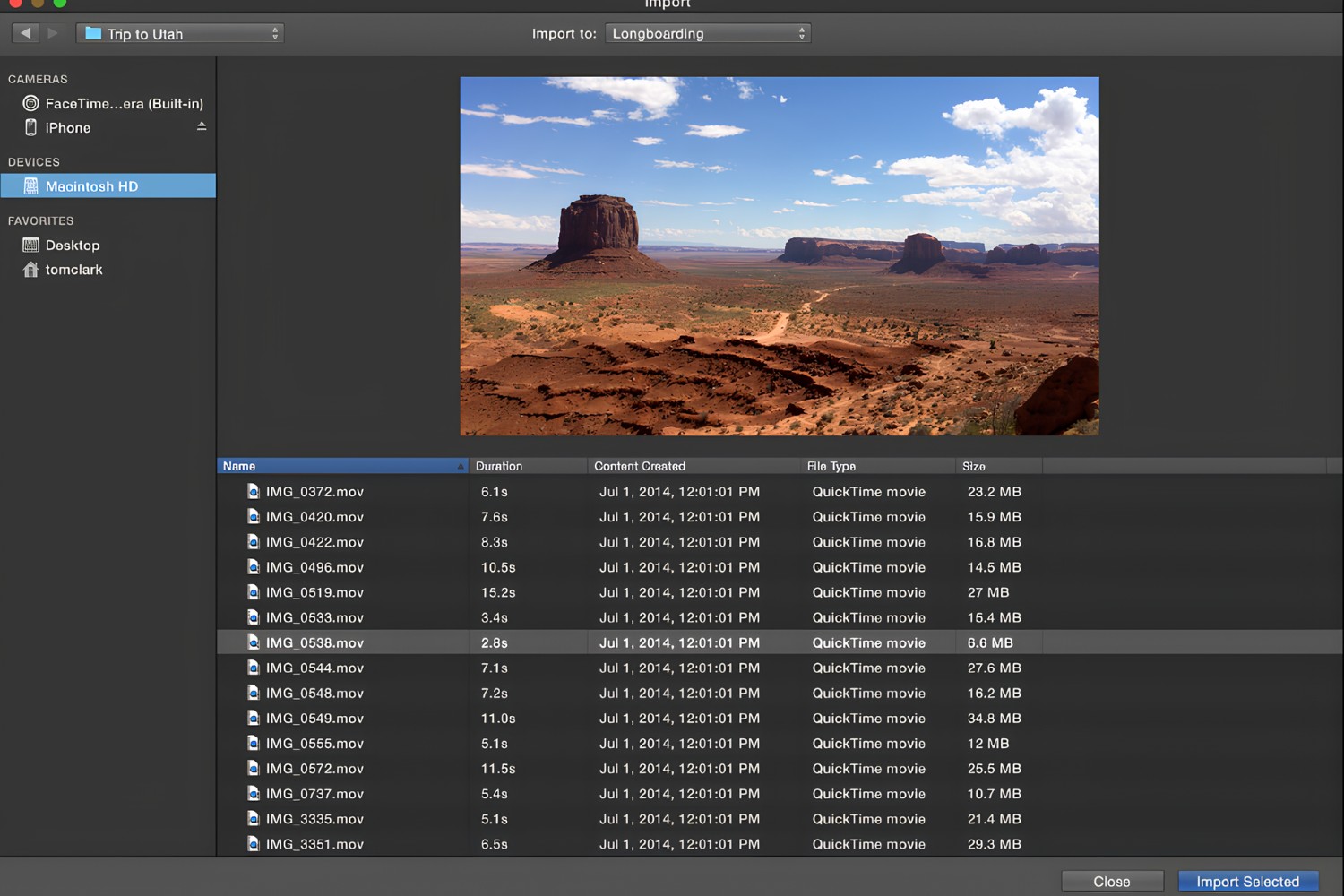Introduction
Adding music to your iMovie projects can greatly enhance the overall quality and impact of your videos. Whether you’re creating a personal montage, a marketing video, or a professional film, finding the right music and knowing how to download it to iMovie is essential. The right soundtrack can evoke emotions, set the mood, and captivate your audience.
In this article, we will guide you through the process of downloading music and adding it to your iMovie project. We will cover everything from finding the perfect track to adjusting the volume and timing in order to create a seamless audiovisual experience.
Before we dive in, it’s worth mentioning that using copyrighted music without proper authorization is against the law. It’s important to use royalty-free music or obtain the necessary licenses for copyrighted tracks to avoid any legal issues. Additionally, always give credit to the artists whose music you use, even if it’s royalty-free.
Now that we’ve got the legalities out of the way, let’s get started on how to find and download music for your iMovie projects.
Part 1: Finding the Right Music
When it comes to finding the right music for your iMovie project, there are several options to consider. Depending on your needs and preferences, you can either use royalty-free music libraries, purchase tracks from online music stores, or even create your own music.
One popular option is to use royalty-free music libraries. These libraries provide a wide range of tracks that are pre-cleared for use in various projects. They offer a diverse selection of genres and styles, allowing you to find the perfect soundtrack to complement your visuals. Some popular royalty-free music libraries include Epidemic Sound, Artlist, and AudioJungle.
Another option is to purchase music from online stores such as iTunes or Amazon. These stores offer a vast collection of songs from various artists and genres. While this option may require a financial investment, it provides you with access to popular and well-known tracks that can add a professional touch to your videos.
If you have the talent and resources, creating your own music can be a unique and personalized approach. You can use music production software like GarageBand or Logic Pro to compose original tracks that perfectly fit your project. This option allows you to showcase your creativity and ensures that your music is one-of-a-kind.
When choosing the right music for your iMovie project, consider the mood, tempo, and style that best align with your visuals. Think about the emotions you want to evoke in your audience and how the music can enhance the overall storytelling. It’s important to ensure that the music you choose complements your visuals and doesn’t overpower or distract from the main message.
Once you have determined the type of music you want, it’s time to move on to the next step: downloading the music and importing it into iMovie.
Part 2: Downloading the Music
Now that you’ve found the perfect music for your iMovie project, it’s time to download it and prepare it for integration. The method of downloading will depend on the source and format of the music.
If you’re using a royalty-free music library, most of them offer a simple download option. Locate the desired track on the website and click on the download button. Ensure that you’re downloading the appropriate file format compatible with iMovie, such as MP3 or WAV.
If you’re purchasing the music from an online store, follow the instructions provided to complete the purchase and download the track. These stores typically provide the option to download the music in various formats, so choose the one that is compatible with iMovie.
If you’re creating your own music, you will need to export the track from your music production software in a supported format. Check the software’s documentation or help section for guidance on exporting files.
Once the music file is downloaded, locate it on your computer and ensure that the file name is descriptive and relevant. This will make it easier to find and organize when importing it into iMovie.
Keep in mind that it’s a good practice to store all your downloaded music files in a dedicated folder on your computer. This way, you can easily keep track of your music library and locate the tracks whenever you need them.
With the music downloaded and organized, you’re now ready to import it into iMovie.
Part 3: Importing the Music to iMovie
Now that you have the music file ready, it’s time to import it into iMovie and integrate it into your project. Follow these steps to import the music:
- Open iMovie on your computer and create a new project or open an existing one.
- Locate the media library or import area within iMovie. This is usually located at the top or bottom of the interface.
- Click on the “Import Media” or a similar button to open the file browser.
- Navigate to the folder where you saved the music file and select it. Click on the “Import” button to import the music into iMovie.
- Once imported, the music file will appear in the media library or import area of iMovie.
With the music file imported, you can now proceed to add it to your project.
Note that iMovie supports various audio formats, such as MP3, WAV, AIFF, and more. However, it’s always a good idea to check the compatibility of your music file with iMovie to ensure smooth integration.
Next, let’s move on to the next section to learn how to add the music to your iMovie project.
Part 4: Adding the Music to Your Project
Now that you have the music imported into iMovie, it’s time to add it to your project and synchronize it with your visuals. Follow these steps to seamlessly incorporate the music:
- Drag and drop the imported music file from the media library into the timeline at the bottom of the iMovie interface.
- Position the music file on the timeline where you want it to start playing in your video.
- Adjust the length of the music file by dragging its edges to match the duration of your project or the specific section where you want the music to play.
- Preview the video to ensure the music is properly synced with the visuals. Make any necessary adjustments to the timing of the music file on the timeline.
- Optionally, you can add multiple music files to different sections of your video by repeating steps 1 to 4.
By default, iMovie will automatically lower the volume of any background audio or video audio to ensure the music stands out. However, if you want to adjust the music volume manually, you can do so by selecting the music file on the timeline and using the volume control options.
Remember to maintain a good balance between the music volume and any dialogue or audio in your video to ensure clarity and coherence.
With the music properly added and synchronized, your iMovie project is starting to take shape. Next, we’ll cover some additional adjustments you can make to enhance the music and overall audio experience.
Part 5: Adjusting the Music
Once you have added the music to your iMovie project, you may want to make some adjustments to ensure it fits perfectly with your visuals and enhances the overall audio experience. Here are some ways you can fine-tune the music:
- Volume Control: iMovie allows you to adjust the volume of the music to ensure it blends well with other audio elements, such as dialogue or background sounds. Select the music file on the timeline and use the volume controls to increase or decrease the volume as needed.
- Fading In/Out: To create a smooth transition between different sections or scenes in your video, you can add a fade-in or fade-out effect to the music. Utilize iMovie’s built-in options to gradually increase or decrease the volume at the beginning or end of the music file.
- Trimming: If there are specific sections of the music that you don’t want to include in your video, use the trimming function in iMovie to remove those parts. This can help tailor the music to the specific duration or timing of your project.
- Overlapping: For more complex video projects, you may want to overlap multiple music tracks or add sound effects alongside the main soundtrack. Use iMovie’s editing capabilities to layer different audio elements and create a more dynamic audio experience.
- Transitions and Beats: Consider aligning certain music beats or transitions with specific visual cues or actions in your video. This synchronization can create a more impactful and engaging experience for your audience.
Experiment with these adjustments and trust your creative instincts to find the perfect balance for your video. Remember, the goal is to enhance the storytelling and evoke the desired emotions through the combined power of visuals and music.
With the music adjusted to your satisfaction, take some time to preview your video and ensure that the audio and visuals are in harmony. Make any necessary tweaks and refinements until you achieve the desired result.
Now that you’ve learned how to adjust the music in your iMovie project, let’s wrap things up and recap what we’ve covered.
Conclusion
Congratulations! You’ve now learned how to download music and integrate it into your iMovie projects. By finding the right music, importing it into iMovie, and making necessary adjustments, you can create videos that truly capture the attention and emotions of your audience.
Remember to always use royalty-free music or obtain the necessary licenses for copyrighted tracks to respect the artists’ rights and avoid legal issues. Additionally, giving credit to the artists whose music you use, even if it’s royalty-free, is a show of appreciation for their work.
Take the time to explore different sources for music, whether it’s royalty-free music libraries, online music stores, or creating your own compositions. Experiment with different genres, moods, and styles to find the perfect soundtrack for every project.
When incorporating the music into iMovie, pay attention to the synchronization, volume, and overall flow of the audio with your visuals. Fine-tuning these aspects can greatly enhance the viewer’s experience and elevate the impact of your videos.
Lastly, don’t be afraid to unleash your creativity and think outside the box when it comes to using music in your iMovie projects. Music has the power to evoke emotions, set the mood, and enhance storytelling—so use it as a powerful tool in your video-making arsenal.
Now, armed with the knowledge and skills to download and integrate music into your iMovie projects, go forth and create compelling videos that leave a lasting impression on your audience. Happy video editing!











